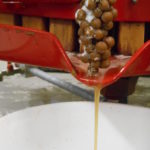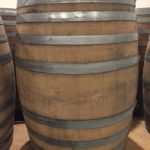Wine Facts
You want to serve white wine between 50 and 55° or take out of the refrigerator 20 min before serving, but the perfect temperature is the temperature that you like it! Even with ice 🙂
100 calories
False, The term bouquet refers to the total scent of the wine not just the grapes.
Because the tannins found in the red wine helps to emulsify the fat found in the red meat and blends all of the flavors together in your mouth.
Free run wine: the highest quality wine, the wine that is free to run off from the grapes, as though you were just lifting the solids out of the liquid.
Press wine: the wine that is actually pressed out of the grapes
3,000# More red grapes fit in the press because they pack together better due to the skin contact fermentation of the red grapes.
Between 2.5 and 3.5 depending on the grape and type of wine.
The CD’s are to scare the birds and other animals away from the grapes.
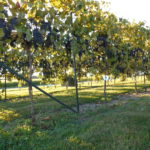

Marechal Foch
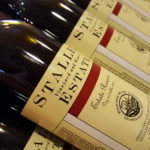

Destemmer cage
Marechal Foch
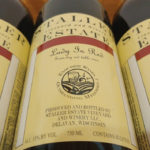
Veraison is the process when grapes begin to ripen, most notably when red grapes begin to turn from green to red.

Horizon Cuvee

Tasters have long insisted on holding the glass by its stem or even by its foot. The idea is to maintain the wine’s temperature.
Vanilla comes from natural vanillin in oak. Smoke is a result of toasting barrels over fire. The other flavors come from fruit and fermentation.
Sulfite is a term used to describe sulfur dioxide and other sulfur derivatives. Sulfites are found in all wines as they are a natural product of fermentation. Sulfur dioxide is used in wine making to prevent oxidation, kill bacteria and wild yeasts, and encourage quick and clean fermentation. The U.S. government requires wine labels to include “Contains Sulfites” to alert those who may be allergic to sulfites. Approximately 1% of the population is allergic to sulfites.
The ‘vintage’ year on a wine label is the harvest year of the grapes from which the wine was made.
A sweet wine is one that has a level of residual sugar that gives it sweet taste. A dry wine has no residual sugar and therefore has no indication of sweetness.
Italy, France, and Spain
‘Terroir’ refers to the unique characteristics that each region (geography, geology, and climate) imparts on the grapes, and therefore the wine, grown there.
Portugal
In a vertical tasting, different vintages of the same wine type from the same winery are tasted. This emphasizes differences between various vintages.
4 – 5 years



